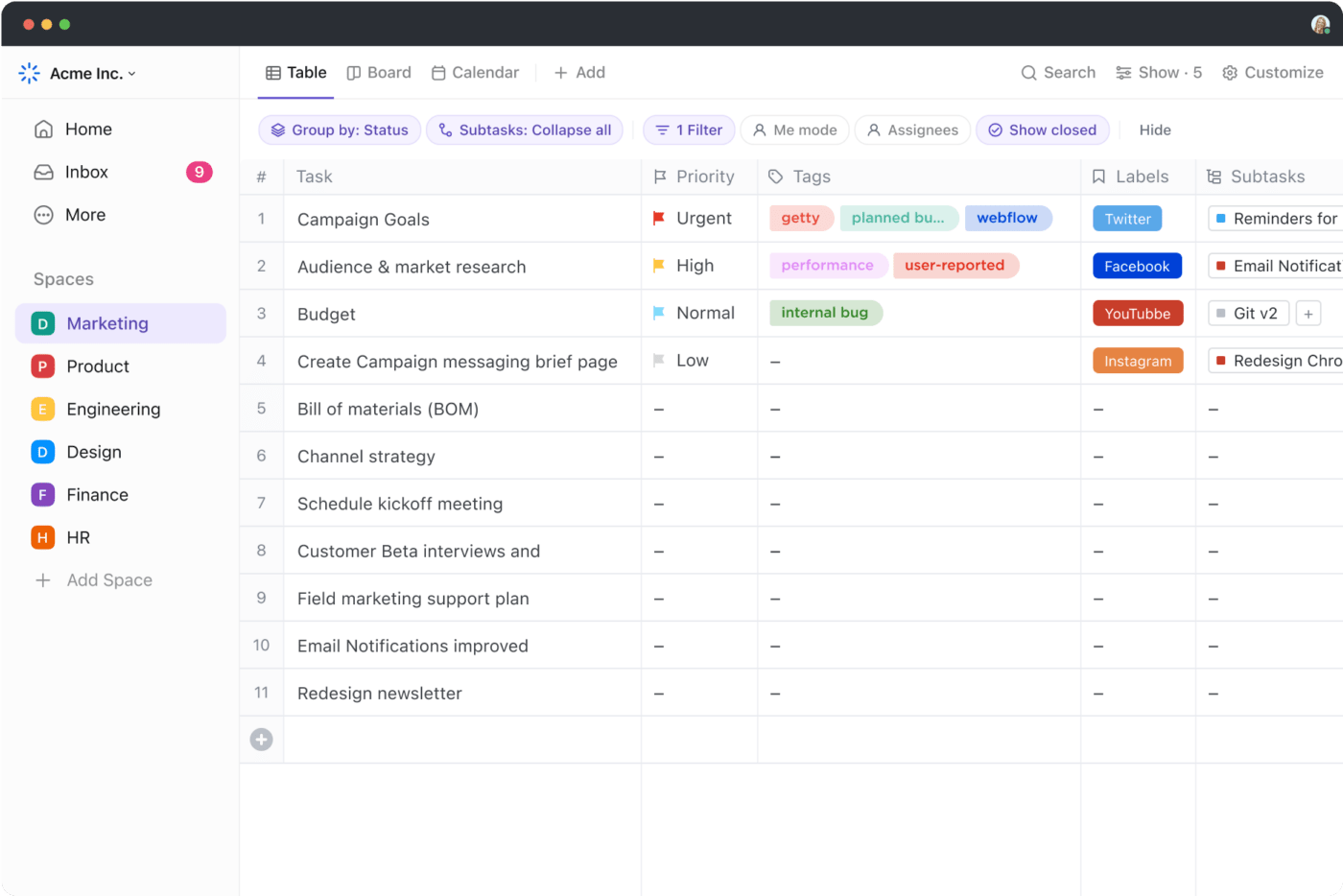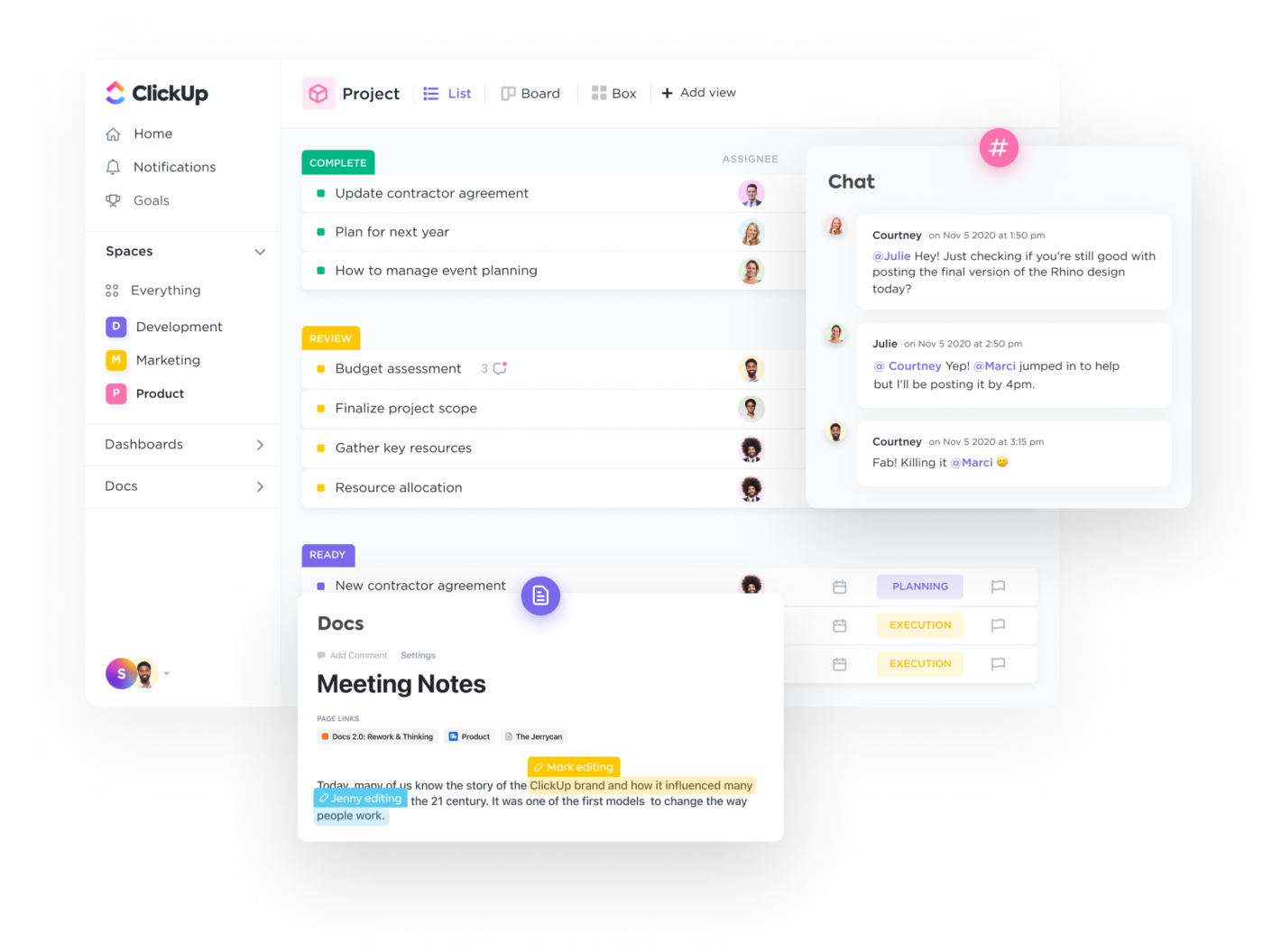Project Cost Management: A Guide for Project Managers

Sorry, there were no results found for “”
Sorry, there were no results found for “”
Sorry, there were no results found for “”
Project management isn’t for the faint of heart. As a PM, you’re in charge of managing everything: people, resources, timelines, and (of course) budgets. Project cost management is a must-have skill for managing both direct costs and indirect costs for new projects. After all, profitability keeps your doors open.
However, cost control isn’t without its challenges. Effective cost management requires proper resource leveling, staying within project scope, and generating accurate budgets in the first place.
If you cringe at the thought of over- or underestimating the cost of a project, we’ve got you covered. In this guide, we’ll break down the ins and outs of project cost management, share cost control methodologies, and show you how to control project budgets.
Project cost management is the process of planning, estimating, budgeting, and controlling costs. The goal of cost management is simple: end a project within its approved budget. This includes keeping expenses low and striking a balance between scope, time, and cost. 💰
However, staying on budget is easier said than done. Project cost management requires following meticulous cost estimation processes to accurately predict the total cost of the project. Not only that, but you need to calculate direct costs, like labor and materials, and trickier indirect costs, like overhead, for the most accurate forecasting possible.
Fortunately, effective cost management comes with a host of benefits for your business, including:
Tracking expenses is important, but project cost management is much more than counting dollars. Think of it as a strategic approach that looks at all potential costs to ensure a project’s financial success. 📈
Every leader does cost management a little differently, but the primary functions of project cost management usually include:
Budgeting is arguably the most important part of project management. It has a huge impact on a project’s feasibility and expected return on investment (ROI).
Project cost management has some crossover with project management, requiring PMs to preserve scope of work, time, and work quality. It also plays a big role in risk management, since going over budget is a big risk for organizations.

Ultimately, effective cost management makes resource management possible, ensuring you use resources wisely throughout the project lifecycle.
Any project manager worth their salt needs to understand the underlying goals of project cost management, which include:
Project managers have a lot on their plates, but budget control is one of the most important tasks on your to-do list. You don’t have to manage this alone, though. Just choose an estimation method as a framework for budget control.
Finances will differ depending on the project, so choose from these popular cost management methodologies to find the right approach for your types of projects.
Earned value management is a technique that assesses your project scope, schedule, and cost to show the objective value that a project returned to your business. 🙌
For example, say you have a $100,000 budget for 10 months. After five months, the project should be 50% complete, with $50,000 spent. If the actual cost is $60,000 and the project is only 30% complete, EVM will highlight that variance to show that you’re both over budget and behind on project progress.
This cost management methodology involves estimating project costs based on historical data from similar projects. It’s the quickest way to estimate costs, but it’s less accurate because it relies so heavily on past data, which doesn’t account for today’s conditions.
Parametric estimates look for statistical relationships between historical data and other financial factors. Parametric is more accurate than analogous estimating because it can identify relationships, although you need a lot of data for it to work properly.
With bottom-up estimating, you create a more accurate cost estimate based on individual work breakdown structure (WBS) components. Once you have a total for each component, you add them up to get the total project cost.
With three-point estimates, you create three estimates for each project. You look at estimates on a best-case, worst-case, and most likely scenarios. This is ideal if there’s a lot of uncertainty in your business. When in doubt, budget for the worst-case scenario to ensure your projects are viable, even if everything goes off the rails.
Effective project cost management is a multi-step process that ensures a project stays on budget from inception to completion. While it might sound complicated, it follows a simple four-step process to give you total financial clarity.
In the planning phase, determine the types and quantities of resources needed for this project. That includes:
Next, make a plan for how you’ll allocate these resources. The easiest way to do this is to create a work breakdown structure to divide the project into smaller, manageable parts. From there, you assign resources to each part of the project. 🛠️
Once you have an idea of the resources you need, it’s time to estimate their costs. Everyone has their own approach here; what matters is that you use an effective cost estimation technique, like analogous estimating or parametric estimating, to guide your reasoning.
It’s hard to see into the future, but try to anticipate all types of costs here. Direct costs, like labor and software subscriptions, are pretty easy, but indirect costs, like your monthly rent, are a little trickier to estimate. Even so, both types of costs affect your profits, so don’t overlook the sneaky influence of indirect costs.
With costs in hand, it’s time to determine your actual project budget. If you made multiple estimates, average them to get a more comprehensive project budget. It’s also good to establish expense baselines during this step, which you can use as reference points throughout the project. For example, if you have a total budget of $20,000 for a two-month project, you would expect to see a baseline of $10,000 in costs after the first month.
Of course, the unexpected will always happen. As a project manager, it’s up to you to plan for the unknowns. Always include a 10% contingency reserve to account for surprise expenses.

Once you have a budget and controls established, it’s time to execute project cost management techniques. Instead of tracking everything in a time-consuming Excel spreadsheet, plug your budget and performance figures into project management software like ClickUp. It’s the easiest way to track actual costs against budget costs—and course-correct before it’s too late.
It might feel like the hard work is over, but you have to continually refine the budget as the project progresses. Use real-time data, feedback, and project developments to keep your project costs as up-to-date as possible. Even if you miss something, you can always use this data to improve cost estimates for future projects.
Project cost management doesn’t have to take hours. With the right project management tools and techniques, you’ll be able to create, manage, and optimize project budgets in just a few clicks. Try out these tricks to simplify project cost management.

Who’s got time to manage costs in slow spreadsheets or sticky notes? Not you. ClickUp is the universe’s favorite all-in-one project management tool. Let us do the heavy lifting for data visualization, collaboration, and, of course, budgeting. ✨
Rely on ClickUp’s robust features to keep project schedules on track:
Benchmarking gives you a better understanding of how well you’re doing—at least comparatively—and gives you an early warning if the project is over budget. You can pull cost benchmarks from past projects, industry averages, or from your initial project goals. However you set them, schedule regular budget check-ins for your projects.

If something’s going off the rails, now’s not the time to stay quiet. Stay in touch with all project stakeholders, especially the higher-ups, if project costs are out of control. It’s easier to course-correct and avoid the headaches of preventable overages if you catch issues early enough and alert the team.
If you went over budget on a past project, use that as an opportunity to improve for future projects. Project post-mortems provide valuable insights for project cost management. You might not be able to do anything about money that’s already spent, but learning from past missteps is the best way to avoid repeating expensive mistakes.
Project cost management is what keeps organizations productive and profitable. Without it, you risk spending more resources on a project than you should, potentially putting your business in the red.
Project cost management requires a lot of data and careful, hands-on management. Instead of passively monitoring costs in spreadsheets, plug your data into an all-in-one platform like ClickUp. It’s the best way to control costs, monitor project progress, and collaborate with your team—all in the same platform.
Give it a try for yourself: Create your free ClickUp Workspace now.
1. What is meant by cost management in a project?
Cost management is the process of planning, estimating, budgeting, and controlling costs in a project. The ultimate goal of cost management is to make sure a project stays on budget.
2. What are the four components of project cost management?
Project cost management requires:
3. Why is project cost management important?
Project cost management matters because it determines the viability of projects and an organization’s overall profitability. Effective cost management ensures projects are completed within budget, but it’s also crucial for risk management.
© 2026 ClickUp